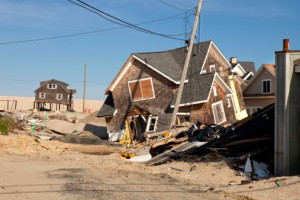
The United States Senate recently passed a bill that would delay significant proposed increases in flood insurance rates for millions of property owners in flood-prone and coastal areas – including those who are still struggling from damages sustained during Hurricane Sandy.
National Flood Insurance Program – Nearly Bankrupt
According to the New York Times, the National Flood Insurance Program, a part of the Federal Emergency Management Agency (FEMA), is $24 billion in debt after paying out billions of dollars after Hurricanes Katrina, Irene, Isaac and Sandy.
Although a 2012 law, known as the Bigger-Water Act, was passed to address that debt by shifting some of the financial risk of insuring flood-prone properties to policyholders, Hurricane Sandy changed that. Millions of coastal property owners were hit with huge rate increases that caused their premiums to skyrocket – sometimes between five and 10 times as much as they paid in the past.
Although the Bigger-Water Act was backed by fiscal conservatives, who said it would cut government spending, and by environmentalists, who said it would more accurately reflect the true cost of flooding damage caused by rising sea levels, eastern seaboard residents who were hit hardest by Sandy and who were subject to the rate increases sought legislation to delay the increases.
The new bill, co-sponsored by Robert Menendez, Democrat of New Jersey and Johnny Isakson, Republican of Georgia and recently passed by the Senate, would put less of an onus on policyholders and delay what the Bigger-Water Act tried to do.
The Flood Insurance Quandary
That’s a question many homeowners are asking themselves now that FEMA is re-drawing flood zone maps – making many more homeowners subject to flood insurance requirements. In some cases, insurance companies are requiring homeowners to raise their homes by several feet if they want to avoid purchasing flood insurance.
Unfortunately for homeowners, homes that were not subject to flood insurance – but were flooded during Hurricane Sandy – weren’t eligible for FEMA reimbursement other than emergency aid. However, insurance companies won’t provide coverage for flooding. So, what do you do?
The answer to that question isn’t as clear as anyone would like it to be. Homeowners’ best bet is to make sure that they have the appropriate amount of required flood insurance through FEMA and the appropriate homeowners’ insurance coverage going forward.
Having Coverage & Getting Reimbursed – Two Very Different Things
Having the homeowners’ insurance and flood insurance you need to ensure that you are able to cover any damages your home sustains is easy. Just pay your premiums. However, getting reimbursed for those damages isn’t always as easy. Insurance companies often don’t play fair when it comes to adhering to their own insurance contracts – especially in situations like Hurricane Sandy where they are being hit with thousands of claims of once and are seeing lots of money going out instead of coming in.
Rather than abide by their contract with policyholders, many insurance companies will engage in bad faith insurance practices such as denying legitimate claims, unreasonably delaying claims and offering low settlements to policyholders they know are desperate.
Don’t accept that type of behavior. Contact an experienced insurance dispute lawyer to analyze your situation and determine your legal options so that you can make an informed decision about what’s right for you and your family.


